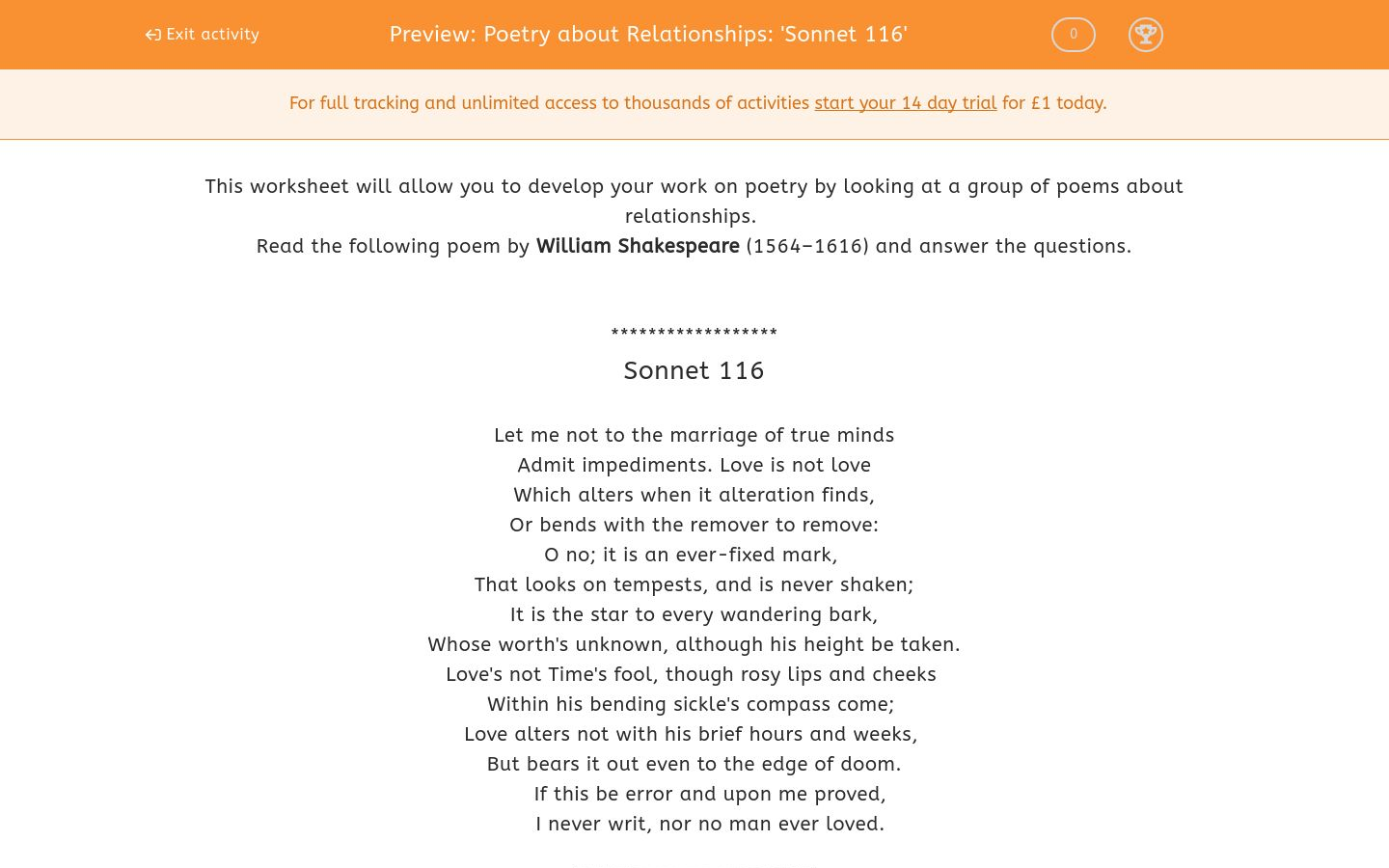

These sonnets have proven to beat the tides of time. Shakespeare wrote 154 sonnets in total, which were published in the year 1609. I have never written anything of value, and no one ever truly loved. If this is wrong and you can prove otherwise, Love alters not with over the course of a few brief hours and weeks,īut bears it out even to the end of the world! Love is not dependent on time, though your youthful rosy lips and cheeksĪre inevitably affected by the cruel effect of time, Whose value is immeasurable, although is often taken for granted. It is the constant North Star used as a guide by all lost ships, That goes through wild storms and is never shaken. May I never stand in the way of two people who are truly in love. Love alters not with his brief hours and weeks,īut bears it out even to the edge of doom. Within his bending sickle’s compass come Love’s not Time’s fool, though rosy lips and cheeks


The argument and analysis help explain both the similarities and the differences between the cognitive processes at work in narrative and in lyric, and the resistance many readers have to lyrics, where the pattern-processing required is so much less effortlessly convergent than in narrative.Whose worth’s unknown, although his height be taken. The almost automatic convergence of hierarchies of patterns in narrative differs starkly from the novel compounds of patterns upon patterns, often athwart or concealed behind other patterns, in lyric poetry. Contrasting Shakespeare’s dramatic narrative at its most ‘lyrical’– the willow-cabin speech in Twelfth Night – with a sequence of several Sonnets shows how decidedly non-narrative pure lyric can be. But verse can play with pattern in very different ways, both more conventional (less natural) and more exploratory (more effortful). We understand narrative swiftly because we evolved to understand events in terms of hierarchies of converging pattern. Cognitive neuroscience shows that minds work as pattern extractors.


 0 kommentar(er)
0 kommentar(er)
